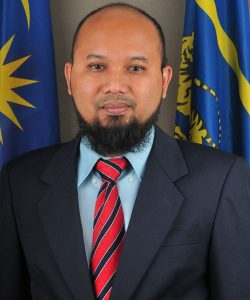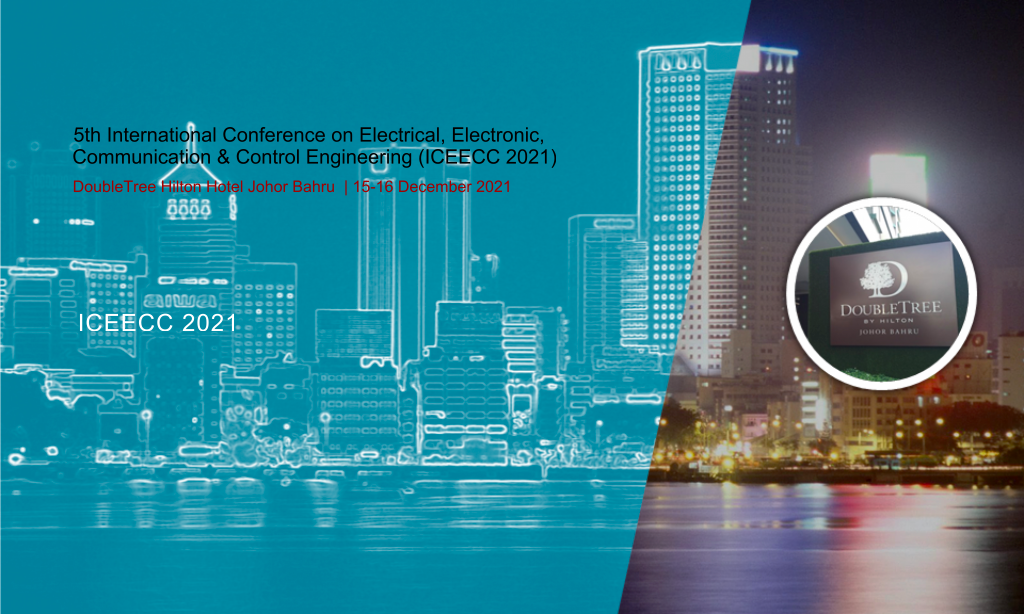Keynote:
Research Opportunities in Distribution Systems Resilience Enhancement

PROFESSOR IR. DR. HAZLIE BIN MOKHLIS
Department of Electrical Engineering
Faculty of Engineering
Universiti Malaya
Biography
Hazlie Mokhlis received the Bachelor of Engineering (B. Eng. (Hons)) degree and Master of Engineering Science (M. Eng.Sc) in Electrical Engineering from University of Malaya in 1999 and 2003 respectively. He received PhD degree from the University of Manchester in 2009. He is currently Professor at Department of Electrical Engineering, University of Malaya. He held several important positions; Deputy Dean Research (2013-2014), Deputy Dean Postgraduate Studies (2014-2015, 2017-2018), Deputy Dean Undergraduate Studies (2018-2019) and Head of Department (2015-2017) at the Faculty of Engineering. Dr Hazlie is actively involved in research as a principal investigator with a total amount of research grant worth more than RM 2.5 million. He is the author and co-author of more than 300 publications in international journals and proceedings in the area of Power Systems and Energy. Up to now, he had successfully supervised 32 PhD, 10 Master (by research) and 56 Master (Mix-mode and Course Work) candidates. He is also active as reviewer for many reputable journals such as IEEE transaction on Power Systems, IEEE transaction on Sustainable Energy, IET Generation, Transmission & Distribution and International Journal of Electrical Power & Energy Systems and several international conferences. His outstanding research outcomes had been recognized when listed in top 2% scientists by Stanford University in 2020. Besides being involved with research, he is also active in the development of Malaysian Standard as a member of Working Group in Development of Malaysian’s Power System Analysis and Studies (WG6) and Expert Representative in IEC for project TC 8/PT 62786. Prof Hazlie is a Chartered Engineer with the Engineering Council UK and a Professional Engineer with the Board of Engineers Malaysia. He is also an external examiner/assessor for many local universities for the Electrical Engineering programme. Currently, he is Chair for IEEE Power Energy Society, Malaysia Chapter (2020-2021). His research is focusing on improving the efficiency and resiliency of power system operation.
Abstract
Catastrophic events such as hurricanes, flash floods and earthquakes in recent years have become a major threat to the whole world. It not only causes losses in economic and human life, it also led to significant damage to the critical infrastructures, mainly electrical supply systems. Failure in this system disrupts the functionality of many other critical infrastructures such as healthcare, banking, water supply and national security. Realising the importance of electricity supply system, remarkable efforts are made by power utilities and researchers to achieve a resilient electrical supply system. The aim is to ensure the system can resist the sudden changes and quickly recover after the occurrence of catastrophic events so that electricity can be supplied as maximum as possible. Distribution system has a great potential for resiliency improvement in a power system. This talk will discuss the concept of power system resilience and research opportunities to improve the resiliency of a distribution system. Overview of the current climate conditions that lead to catastrophic events will also be presented to show the needs of a resilience power system.
Keynote:
Analytical approach to PID tuning: design tradeoffs and unified perspectives

Prof. R. Vilanova
Dean of the School of Engineering,
Universitat Autonoma de Barcelona
Barcelona, Spain
Biography
Prof. R. Vilanova is at present Full Professor of Automatic Control and Systems engineering, Dean of the School of Engineering at the Universitat Autonoma de Barcelona, (Barcelona, Spain) and head of the research group on Advanced Control Systems. He has published more than 80 papers in international indexed journals. Also co-author/editor of three Springer books. He’s main research interests are on the control and operation of wastewater treatment plants, topic where he has been awarded national research projects since 2010 and also on PID control in its different perspectives. He’s been PI of a number of national and European projects and also devoted a lot of effort on actions/projects with an educational perspective within the European Higher Education area (SOCRATES, TEMPUS; ERASMUS MUNDUS, etc). He is a member of IFAC and IEEE-IES, he’s also member of the Technical Committee on Factory Automation.
Abstract
It is an indisputable fact that the proportional-integral-derivative, PID, controller has been, and it still is, the workhorse of control at process industries. Even if more advanced control solutions are permeating into the control rooms, the PID continues to be the preferred solution at field level. Therefore, the reliability of those advanced, plant-level solutions, depends on the appropriate performance of such PID level. One of the cornerstones of activity in PID control is that of adjusting the PID gains: tuning the PID controller. Being this a basic need in control practice, the goal of obtaining simple, powerful and as generalist as possible tuning rules has been one of the major drivers of research for improvements on PID control.
In this lecture attention is focused on model-based tuning of single-loop PID controllers in terms of the robustness/performance and servo/regulator trade-offs. Although the robustness/performance compromise is commonly considered, it is not so common to also take into account, for example, the conflict between input and output disturbances, referred also as the servo/regulator trade-off. As interested in providing a unified tuning approach, it is shown how the proposed methodology allows to deal with different process dynamics in a unified way. The proposed approach to design is completely analytical and motivated by the solution to a conveniently stated H-inf problem.
Keynote:
Ambipolarity Effect in Field Effect Transistors

Mehmet ERTUGRUL
Department of Electrical Electronics Engineering, Engineering Faculty, Ataturk University, 25240 Erzurum, Turkey
Biography
Prof. Dr. Mehmet Ertugrul was born in Trabzon, Turkey, in 1966. He received the B.Sc. degree from the Department of Physics, in 1986, and the M.Sc. and Ph.D. degrees in physics, in 1990 and 1994, respectively. From 1994 to 1996, 1996 to 2001, and 2001—2002, he was, respectively, an Assistant Professor, an Associate Professor, and a Full Professor at the Department of Physics, Ataturk University, where he has been a Full Professor at the Department of Electrical and Electronics Engineering since 2003. He is the author or co-author of more than 200 papers published in international journals and also over 200 publications in national and international conference proceedings. His current research interests include carbon nanostructures and composites, energy storage systems employing 2D structures such as graphene, dichalcogenides and MXenes, biomedical and gas sensors, ultraconducting and superconducting cables, covetics, radar absorber materials, superconducting and semiconducting devices. He worked as a visiting scientist at Oak Ridge National Laboratory between 2001-2003, 2005-2006, and 2008-2009. He has been working as a visiting profffessor at University Putra Malaysia (UPM) since 2019. Prof. Ertugrul has received several awards such as Encouragement award by The Scientific and Research Council of Turkey (TUBITAK), The Successful Young Scientists Award by the Turkish Academy of Sciences, and the best project award. He was also awarded with NATO-C scholarship in 2001 and TUBITAK scholarship in 2009. He has served as a supervisor to many masters and PhD students. He has worked for several committees such as the Higher Education Council, The Scientific and Research Council, The Ministry of Science, Technology and Industry of Turkey.
Abstract
Ambipolarity has become important for many applications in recent years. In addition to device fabrication from materials with ambipolar behavior, many factors such as the controllability of ambipolarity and the degree of ambipolarity have attracted the attention of researchers. Many factors causing ambipolarity have been reported in the literature. Especially, 2D dicalgonites such as WS2 and MoS2 are the leading materials for FET devices with ambipolar behavior. Besides the properties of these 2D materials, the geometry of the device also has an effect on ambipolarity. In this study, the effect of geometric properties of the FET device, such as channel width, on ambipolarity was investigated. For the FET device, it was seen that the instability starts from a few layers of channel thickness and then decreases again as the thickness increases. It was observed that as the thickness increased, the degree of ambipolarity approached zero. The degree of ambipolarity approaching zero indicates that the WS2 channel exhibits natural n-type behavior and the ambipolar effect disappears.
Keynote:
5G and Vehicle Communications

Dr. Cavusoglu
Biography
Dr. Cavusoglu has received his BSc from Electronics and Communication Engineering, Yildiz Technical University, Istanbul, Turkey in 1994, Msc from Electrical Engineering, Illinois Institute of Technology, Chicago, USA in 1998 and Ph.D degree from Electrical and Computer Engineering, University of Illinois at Chicago (UIC), Chicago, USA in 2005. He has been with Ataturk University since 2005. His research interests are mainly in the fields of communication, signal/image processing, networking, 5G and IoT areas.
Abstract
The vehicle sector has seen significant changes with the Intelligent Transportation System (ITS) over the last decade. New technologies are being integrated into vehicles to detect possible road hazards and enhance the driving experience. In today’s digital world, ITS plays a critical role in modern life mobility as vehicle connectivity grows. An important component is being integrated into cars is that communication technologies to establish vehicle connectivity. VANETs (Vehicular Ad-hoc Networks) are intelligent transportation system that enable vehicles to communicate each other directly through a wireless network. Each vehicle acts like node and equipped with transceiver to send and receive data. Vehicle-to-Vehicle (V2V) and Vehicle-to-Infrastructure (V2I) communications are the two types of VANETs. In V2V communication, every vehicle exchanges traffic-related information to reduce traffic congestion, increase passenger safety, and enable efficient vehicle management. In V2I communication, on the other hand, the communication is between vehicles and wireless access points to make an early informed decision to the situation that could cause untoward incidents.
The focus of this talk is on 5G and its expected usage on Vehicle Communication. In this context, recent research developments that must be provided to allow a safe communication in Vehicle communication are discussed.
Recent research developments in VANETs consist of traffic management, road safety and infotainment applications. Road safety applications are designed to provide information to drivers about different possible risks such as collision avoidance (safe distance), road sign notifications (curve speed warning), incident management (emergency vehicle warning). Traffic management applications designed to improve road traffic management that make the users awere of local traffic information such as speed management and vehicle tracking. Traffic management and road safety applications are more of V2V interest. As for infotainment applications, these applications help provide internet access to the vehicles such as finding the nearby gas station or parking booking. Recently, studies for V2V communication are popular. Research and testing of communication technologies used in the VANETs environment is gaining attention. Reliable information exchange between vehicles depends on using V2V communication technology. Dedicated Short‑Range Communication (DSRC), Wireless Access in Vehicular Environments (WAVE) and Cellular Systems are types of communication technology in VANETs. An alternative solution for V2V communication technology is cellular systems. Cellular Systems covers the technologies that is already in use for V2V communications such as Long-Term Evolution (LTE) or Fifth Generation (5G) technologies. Different communities, such as the 5G Automotive Association (5GAA) and the Third Generation Partnership Project, are supporting the Cellular Systems. Each of communication technologies have their own set of advantages. For example, DSRC is effective for a short-range application (about 300 m) such as collision avoidance and other security applications, but Cellular Systems are better for applications that require longer coverage ranges.
